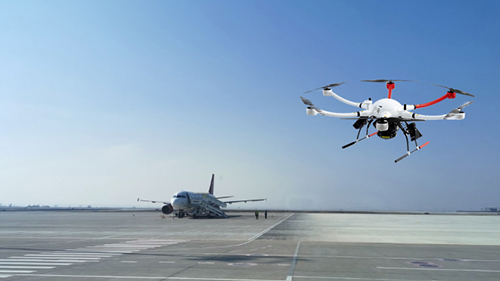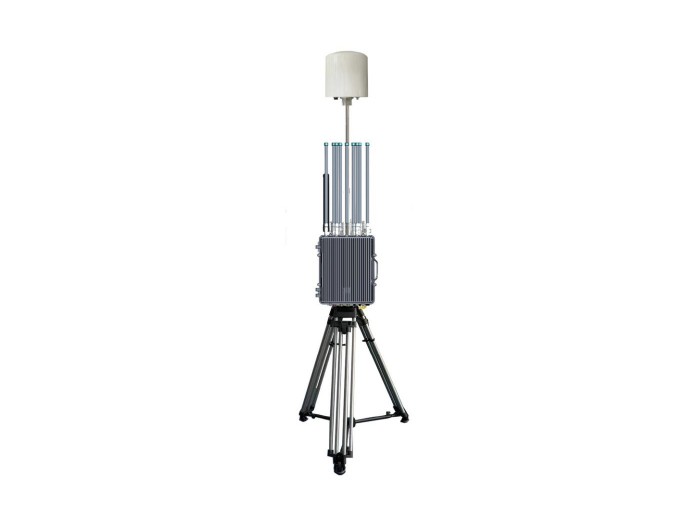5G-Powered Surveillance Unmanned Aerial Vehicles: Revolutionizing Real-Time Monitoring
In today’s fast-paced world, security and situational awareness demand robust solutions capable of delivering real-time data accurately and efficiently. Traditional surveillance methods often suffer from latency issues, limited bandwidth, and coverage gaps, creating critical blind spots in monitoring operations. How can organizations overcome these challenges to ensure comprehensive, instantaneous aerial surveillance? The integration of 5G technology with unmanned aerial vehicles (UAVs) offers a groundbreaking solution. Leveraging the ultra-fast speeds, low latency, and expansive connectivity of 5G networks, surveillance UAVs can provide real-time high-definition video feeds and data transmission, empowering sectors like public safety, industrial inspection, and disaster response to make faster, smarter decisions.
This article explores the evolution, benefits, and applications of 5G-enabled surveillance unmanned aerial vehicles. If you are seeking cutting-edge surveillance technology that meets the demands of modern security and operational efficiency, understanding how 5G and UAVs converge is essential. Let’s delve deeper into this transformative technology.
1. Understanding Surveillance Unmanned Aerial Vehicles and 5G Connectivity
Surveillance unmanned aerial vehicles, commonly known as drones, are equipped with cameras and sensors to monitor environments from the sky. Traditionally reliant on 4G, Wi-Fi, or limited radio links for data transmission, these UAVs faced bandwidth constraints and latency that impeded real-time responsiveness. The introduction of 5G networks reshapes this landscape.
5G technology offers data transfer speeds up to 10 Gbps and latency as low as 1 ms—significantly better than 4G LTE’s average 50 ms latency. This leap enables UAVs to transmit ultra-high-definition (UHD) video streams and sensor data instantly to control centers or cloud platforms. According to a recent study by GSMA Intelligence, the global 5G subscriber base will reach 3.5 billion by 2025, indicating broad infrastructure availability to support such UAV deployments.
Aside from raw speed, 5G supports massive machine-type communications (mMTC), allowing numerous UAVs to operate simultaneously within a single network without interference. This scalability is crucial for large-scale surveillance operations across urban and remote areas, enhancing overall coverage and coordination.
2. Benefits of 5G Integration in Surveillance UAV Operations
Incorporating 5G connectivity into surveillance UAVs offers numerous advantages that elevate their operational effectiveness:
- Real-Time Data Transmission: Low latency enables instant communication between drones and operators, crucial for time-sensitive situations like search and rescue or security breaches.
- Enhanced Video Quality: High bandwidth supports 4K/8K video streaming and real-time analytics, allowing detailed monitoring and improved threat detection accuracy.
- Extended Operational Range: 5G networks facilitate beyond-line-of-sight (BLOS) control, reducing the need for operator proximity and enabling expansive surveillance coverage.
- Improved Reliability and Network Slicing: 5G can allocate dedicated network segments for UAV data, ensuring uninterrupted connectivity even in congested network conditions.
- Edge Computing Integration: Coupling 5G with edge computing reduces data processing delays by handling analytics closer to the UAV, boosting decision-making speed.
For example, during large public events, multiple surveillance UAVs connected via 5G can relay real-time footage to law enforcement agencies, facilitating rapid crowd management and incident response. This capability dramatically improves situational awareness compared to older communication technologies.
3. Practical Applications of 5G-Powered Surveillance UAVs
The synergy of 5G and UAV technology is driving innovation across multiple industries, including:
- Public Safety and Law Enforcement: Rapid deployment of 5G-enabled drones during emergencies like fires, accidents, or riots allows authorities to monitor situations live and coordinate responses effectively.
- Infrastructure Inspection: Utilities, construction, and transportation sectors use surveillance UAVs to perform regular inspections of pipelines, bridges, and railways remotely, reducing inspection times by up to 40% according to industry reports.
- Environmental Monitoring: Drones equipped with sensors and cameras can track environmental changes, wildlife activity, or illegal activities like poaching in real time, supporting conservation efforts.
- Disaster Management: In scenarios such as floods or earthquakes, 5G-connected UAVs provide live aerial views, enabling faster damage assessment and resource deployment.

These applications demonstrate how 5G surveillance UAVs help organizations stay ahead in scenarios where actionable intelligence and immediate response are pivotal.
4. Future Trends and Challenges in 5G Surveillance UAV Deployment
While the benefits of 5G-enabled surveillance UAVs are significant, the technology is continuously evolving. Future trends include:
- AI-Driven Autonomous Surveillance: Combining 5G with artificial intelligence allows drones to autonomously detect anomalies, identify targets, and optimize flight paths in real time.
- Integration with Smart City Ecosystems: Surveillance UAVs will increasingly complement other IoT devices, contributing to comprehensive urban safety and traffic management systems.
- Enhanced Security Protocols: As UAVs transmit sensitive surveillance data, robust cybersecurity measures—including 5G network encryption and drone firmware protection—are essential to prevent hacking or data breaches.
However, challenges such as network infrastructure gaps in rural areas, regulatory hurdles regarding airspace and privacy, and high initial deployment costs must be addressed to maximize adoption. Industry collaboration with policymakers and investment in 5G infrastructure are critical to overcoming these barriers.
Key Recommendations for Leveraging 5G Surveillance UAVs Effectively
- Assess Network Coverage: Ensure your operational areas have reliable 5G coverage or plan for hybrid network solutions integrating 4G or satellite.
- Invest in Robust UAV Hardware: Choose drones compatible with 5G modules and equipped with advanced sensors for high-quality data capture.
- Implement Data Security Measures: Adopt end-to-end encryption and regularly update UAV firmware to protect sensitive surveillance information.
- Stay Updated on Regulations: Work closely with aviation authorities to comply with flight laws and privacy regulations related to UAV surveillance.
- Partner with Technology Experts: Collaborate with 5G network providers and UAV specialists to design tailored surveillance solutions that meet your operational needs.
Want to learn more about integrating 5G-powered surveillance drones into your security framework? Contact us for a professional consultation or visit our website for detailed insights.
Conclusion
The combination of 5G technology and surveillance unmanned aerial vehicles marks a significant advancement in real-time monitoring capabilities. By delivering ultra-low latency, high bandwidth, and scalable connectivity, 5G unlocks new possibilities for UAV deployments across public safety, infrastructure management, environmental protection, and disaster response. Our company stands at the forefront of this innovative transformation, providing expert solutions that harness 5G and UAV technologies to meet your unique surveillance requirements. Embrace the future of aerial monitoring—visit our website now or contact us for a free consultation to discover how we can help you achieve unparalleled situational awareness and operational efficiency.

















